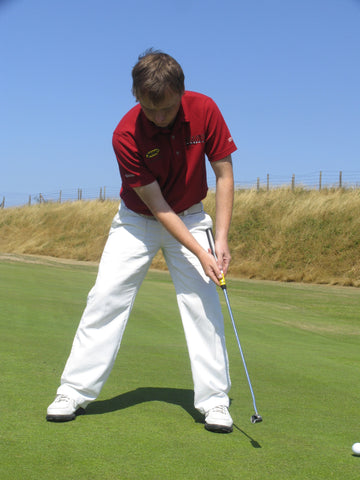Putting - Fundamentals Pocketshots
Hole more putts, shoot lower scores, lower your handicap and win more matches. A 10% improvement in your putting is easier to achieve than a 10% improvement in any other part of your game, and it will save you more shots.
By practising the exercises in this Pocketshots you will learn how to hit better long putts, reduce the chances of 3 putting; how to hit more confident short putts and cure the dreaded “Yips”, how to read greens more effectively and increase your chances of holing breaking putts.
Harold Swash is one of the world's top putting coaches, if not the leading coach. At 70 years young he is still going strong and teaches players all over the world. He has more than 40 years of experience in the golf industry as a coach, golf club designer and inventor of putting training aids and the Yes C groove putters. He has taught most of Europe's Ryder Cup team, major winners like Padraig Harrington as well as a host of European Tour winners and over 50 tour players such as Henrik Stenson, Darren Clarke, Nick Faldo, Ian Woosnam, David Howell and Thomas Levet.
In this lesson he covers
- Essential Putting technique
- Putter - design, weight and length
- Grip
- Posture and stance
- Swing path and tempo
- How to read greens like the Pros
- Long putts
- Short Putts
- Breaking Putts
- How to practice
- Pre-round drills to improve your putting
- How to play - Putting under pressure
- Self-assessment
This is a complete putting lesson from one of the world's bestgolf coaches. Here is a small extract below:
My Guiding Principle
The guiding principle that governs my teaching is the need to develop a true roll on the ball. The quicker a ball starts to roll after impact the better chance it has of staying on its intended line with its intended pace.
My views on the mechanics of the stroke such as the stance, posture, stroke plane and the grip are all geared to help you achieve a true roll.
[Draw a straight line on your ball and line it up for a straight ten foot putt. Aim the line at the centre of the cup. If you hit the ball straight the line will roll end over end].
The 4 Fundamentals of Putting
These are the basic principles of putting. I call them the “Four Fundamentals”.

The blade of the putter needs to be square to the target at both the address and strike position.
If you setup with an open or closed face at address, you will find it difficult square the clubface at impact and consistently hit the ball on line.
2nd Putting Fundamental
The blade of the putter needs to be square to the path through the hitting area.
If the blade is open or closed to the path of the stroke you will put hook or slice spin on the ball. If you do then on the ball’s first contact with the ground it will try and spin off-line.
When putting on slow greens with thicker grass any degree of side spin will deflect the ball much more easily than on a fast, smooth putting surface.
Therefore we need to make sure that we keep the blade of the putter square to the path of the stroke.

The putter blade needs to have a slight up stroke through the hitting area.
Golf is a game of opposites. In order to get the ball rolling along the ground we need to hit the ball with a slight upstroke. The correct ball position is critical in achieving the desired strike.
With the hands slightly ahead of the putter through the strike this will develop the correct plane of strike that will hold the ball truer to its target line.
Ideally use a putter with less loft, between 2 and 3 degrees is best.
4th Putting Fundamental
The putter blade needs to have a smooth acceleration through the hitting area.
How hard you hit the ball determines whether or not the ball takes any break you may have read.
You need acceleration (not deceleration) through the ball.
Strive for a rhythmic stroke and a smooth acceleration through the hitting area. If you decelerate as a right-hander you will tend to leave putts left of the target or even short.
The easiest way to control the speed of the putter head is to use the bigger muscles (shoulders) to lead the stroke.
If you enjoyed this edition of Putting Pocketshots, have a look at our downloadable video here!



